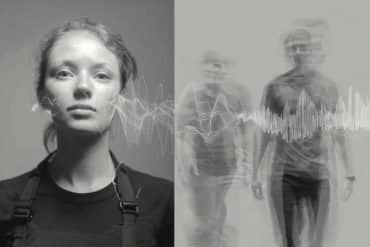Summary: Receiving more intensive treatment for high blood pressure results in positive alterations in brain structures associated with clearing toxins and other by-products. Findings reveal intensive blood pressure treatments can reduce the risk of dementia and improve brain health overall.
Source: American Heart Association
Among people who received more intensive treatment for high blood pressure, evaluations of MRI scans indicated a positive change in brain structures involved in its ability to clear toxins and other byproducts, according to preliminary research to be presented at the American Stroke Association’s International Stroke Conference 2023.
The study is the first to examine whether intensive blood pressure treatment may slow, or reverse structural changes related to the volume of the brain’s perivascular spaces, areas of the brain around the blood vessels that are involved in the clearance of toxins and other byproducts. These areas tend to enlarge as people get older or have more cardiovascular risk factors.
“If the brain cannot properly clear toxins and metabolic byproducts, they will accumulate and may contribute to the development of dementia,” said Kyle Kern, M.D., M.S., lead author of the study and a clinical research fellow in the intramural stroke branch of the National Institute of Neurological Disorders and Stroke, a division of the National Institutes of Health in Bethesda, Maryland.
“Some research has proposed that the pulsations of the cerebral arteries with each heartbeat help to drive the clearance of these toxic brain byproducts in the perivascular spaces. However, high blood pressure over the long term stiffens arteries, impairing function and the ability to clear toxins, resulting in enlargement of perivascular spaces.”
The researchers analyzed brain MRI scans for 658 participants (average age of 67 years, 60% women) of the SPRINT-MIND MRI substudy. The trial began in 2010, and the last MRI scan was completed in July 2016. All participants had high blood pressure but none had previously been diagnosed with diabetes (Type 1 or 2), dementia or stroke.
After an average 3.9-year follow-up period, 243 people in the intensive treatment group (systolic blood pressure goal of 120 mm Hg) and 199 people in the standard treatment arm (systolic blood pressure goal of 140 mm Hg) had pre– and post–MRI scans that were analyzed for the percentage of brain tissue taken up by perivascular spaces.
Participants were screened at seven MRI sites across the U.S.: University of Alabama at Birmingham, Boston University, Vanderbilt University, Wake Forest University, University of Miami, University of Pennsylvania and Case Western Reserve University.
In MRI scans taken when the study began, the percentage of brain tissue occupied by perivascular spaces was higher among the patients who were older and had a greater volume of white matter hyperintensities (areas of increased brightness on an MRI scan that are the best-established marker of damage to small blood vessels in the brain). These patients also had more brain atrophy, another marker of aging and declining brain health.
After controlling for age and sex of the participants, and the study site where the MRIs were performed, the analysis found:
- At the start of the study, the volume of perivascular spaces was similar among participants in both blood pressure treatment groups.
- After almost 4 years of high blood pressure treatment, the volume of perivascular spaces had decreased significantly in the intensive treatment group but did not change in the standard treatment group.
“Previous research has confirmed that effective blood pressure control is important for brain health. Our secondary analysis findings from SPRINT-MIND MRI suggest that intensive blood pressure control may be beneficial by reducing damage to the brain’s toxin and byproduct clearance pathway,” Kern said.
While the original SPRINT-MIND MRI study demonstrated that intensive blood pressure control may slow the accumulation of white matter hyperintensities, this substudy found that it may contribute to reversing the effects of high blood pressure on perivascular spaces.

“These results also suggest that perivascular spaces are more dynamic, and further research is needed to determine the relationship between perivascular space change and the progression of white matter hyperintensities,” Kern said.
The study is limited to the data available and the scope of knowledge that can be interpreted from the data. This includes not being able to determine whether the change in perivascular spaces improves thinking ability, or if it is a byproduct of blood pressure treatment that has no cause-and-effect relationship to cognition or cognitive decline.
“The next step is to determine how perivascular spaces relate to cognition and cognitive decline in the SPRINT-MIND trial. That trial included high-quality cognitive function assessments at multiple time points, and forthcoming investigations from the trial will describe how perivascular spaces may relate to the effect of intensive blood pressure control on cognitive decline,” Kern said.
According to the American Heart Association, normal blood pressure is below 120/80 mm Hg. For adults, if systolic pressure (the top number) is 120 to 129 mm Hg, and diastolic pressure is less than 80 mm Hg, this is classified as elevated blood pressure. High blood pressure is a systolic pressure of 130 mm Hg or higher, or a diastolic pressure of 80 mm Hg or higher, that stays high over time.
“These novel findings provide early evidence that it may be possible to reduce perivascular space size by intensive systolic blood pressure lowering. While not yet proven, the implication is that the intensive systolic blood pressure lowering may eventually be associated with better clearance of brain toxins and metabolic by-products and thus, provide a better chance to maintain brain health,” said Philip B. Gorelick, M.D., M.P.H., FAHA, chair of the American Heart Association’s Stroke Brain Health Science Subcommittee and professor of neurology in the Ken & Ruth Davee Department of Neurology at Northwestern University’s Feinberg School of Medicine in Chicago, who was not involved in the study.
Co-authors are Ilya M. Nasrallah, M.D., Ph.D., and Clinton B. Wright, M.D., M.S. Authors’ disclosures are listed in the abstract.
Funding: The study was funded by the National Institute of Neurological Disorders and Stroke, a division of the National Institutes of Health.
About this neurology and blood pressure research news
Author: Karen Astle
Source: American Heart Association
Contact: Karen Astle – American Heart Association
Image: The image is in the public domain
Original Research: The findings will be presented at the ASA International Stroke Conference 2023







